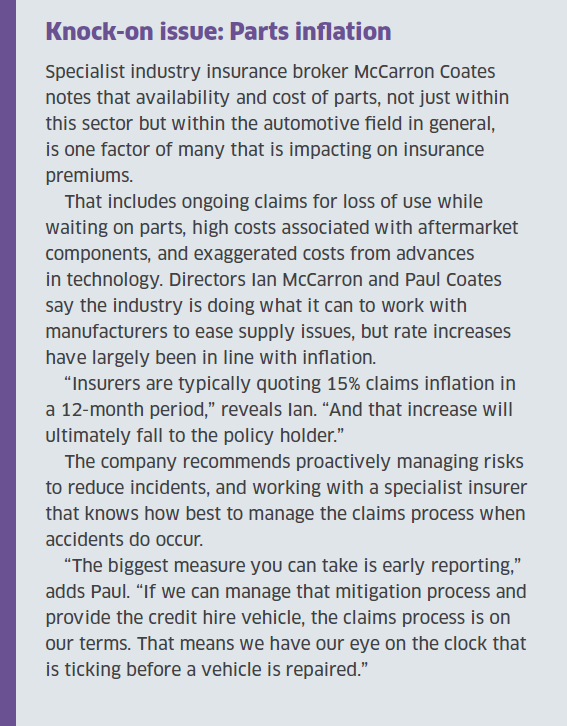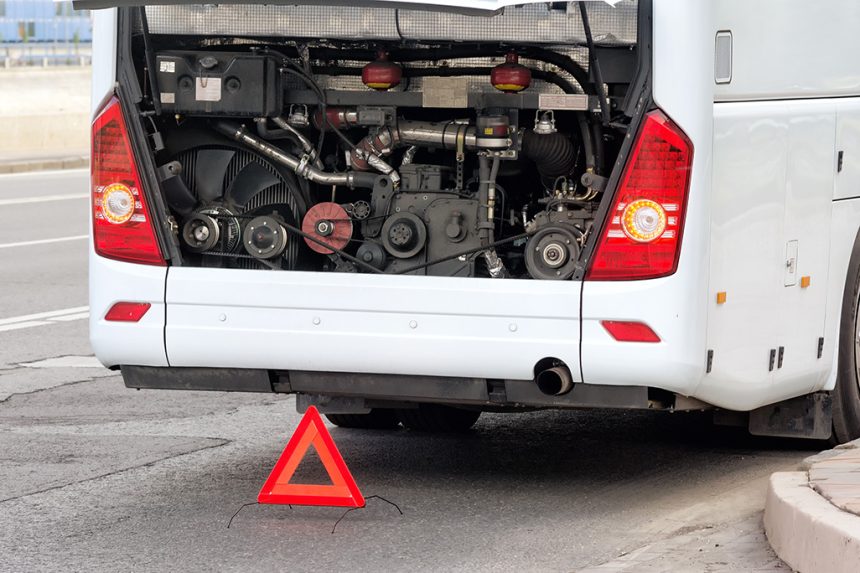Last month, routeone heard concerns about the shortage of parts and its effects on the coach sector. Those consequences included delays in putting vehicles back on the road, the necessity to source parts from different suppliers, and an associated increase in costs.
Rising prices have become the norm in 2024, but how much should coach operators be concerned about the rising cost of parts and maintenance? We speak with Steve Whiteway, Administrator for the Guild of British Coach Operators (GoBCO), to find out how deep the issue goes.
Pandemic hangover
Rising costs of maintenance and parts is monitored at GoBCO via an engineers’ seminar that takes place every year. Concern has been raised there on the issue of rising costs, as well as lack of stock being held by manufacturers due to leaner business practices. Steve estimates that, immediately post-pandemic, it was taking GoBCO members on average 50% longer to obtain parts, with the result that many began keeping stock instead of relying on next-day delivery.
Compounding the problem is that the parts shortage coincides with a slight rise in the age of vehicle fleets. In April, the average age of the Guild’s combined 800 vehicles stood at just over seven years, up from an average of five just three years ago. The consequence is that parts become scarce at a time when vehicles need them more.
Distinction is made between body parts and panels, which Steve reports are in shorter supply. “That suggests that manufacturing of those pieces ground to a halt,” he says. “Everyday parts, track rod ends and other parts interchangeable with trucks, have not been too badly affected.”
Steve calls it an artificial situation. It became noticeable when vehicles awoke from idle months during the pandemic years. “There may have been a surge in demand for parts because many coach operators had been putting off major work. MoT prep was put off. There were no maintenance inspections on laid up vehicles, and no demand for parts, so stock was not held. Some was caused by the inevitable delay in electronic components.”

Supply is gradually improving and catching up with demand. But while that may be the case, costs have now surged. GoBCO saw an average mechanical parts and tyres cost per kilometre rise by 14.5% between 2023-2024 for its members. Costs for some items, like glass, have risen even higher. At the same time, members reported an average 8.7% rise in labour costs. Combined, that amounts to an almost 20% rise in total maintenance costs per vehicle across the Guild’s fleet of coaches.
Steve notes that such a figure is striking. Yet, to quantify the financial impact of those increases would require an examination of profitability over the same period, and operators in the Guild continued to record profits, leading to the conclusion that the price they are able to charge has overwhelmed those increases in costs. Expectations now are that the market will grow as the volume of coaches is built back to pre-COVID levels; parts and service backup should increase to match that volume. Some manufacturers have already taken steps to ensure it does. “There will still be isolated incidents, but I don’t see this holding back the industry,” Steve says. “It would have certainly held us back during COVID-19; but there was no industry to hold back at that point.” Where the concern for the future lies is in the price increases, as there will be a limit for how far those costs can be passed on. A GoBCO think tank does not expect price increases to be at the same magnitude as they are now, but Steve warns there is a ceiling to what customers are prepared to pay.

“As it happens, we have managed to do so; but the feeling across the board is that margins are tighter than pre-COVID and that this boom won’t continue. The industry goes through many cycles and this one is different. There needs to be restraint from drivers on wage increases and from manufacturers on parts costs.”
To that end, any price increases above the official rate of inflation will likely be a challenge for operators. Further rises on contracts will be scrutinised closely as business and schools look closely at spending. “There is a limit to what people will pay to hire a coach and to buy a seat, both of which have enjoyed unprecedented increases over the last two years,” Steve says. “But that won’t continue. We have had the boom time, but I don’t believe it has made the industry more profitable. The good thing is that our floor for coach hire pricing perception won’t go down.”



























